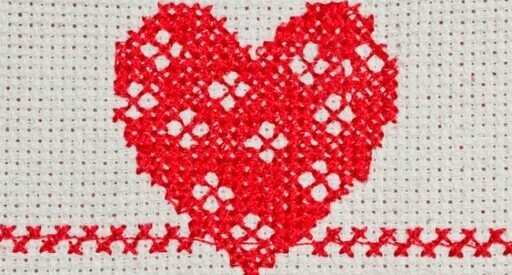Sewing Thread Market to Reach $4.84 Billion by 2034
The global sewing thread market is gearing up for big changes, thanks to rising demand for high-quality apparel, footwear, and home textiles. A recent report puts the market size at USD 3.69 billion in 2024, with projections reaching about USD 4.84 billion by 2034.
This jump comes from a steady compound annual growth rate (CAGR) of 2.74% between 2025 and 2034. Tech breakthroughs, Asia Pacific’s dominance, and a growing love for sustainable threads are all pushing the market forward.
Table of Contents
The Driving Forces Behind Market Growth
Several big factors are fueling the sewing thread market’s rapid rise:
- Expansion of the Textile & Apparel Industry: The textile and apparel sector is booming and needs huge amounts of sewing threads for mass production. Fast fashion and a hunger for trendy, comfy, and tough clothing are raising the bar for thread quality.
- Technological Innovations: New thread production techniques are making threads stronger and more versatile. This matters a lot for demanding uses like technical textiles and car interiors.
- Sustainable Practices: More people want sustainable, eco-friendly threads. Threads made from recycled or organic materials are catching on with consumers and manufacturers who care about the planet.
Regional Insights: Asia Pacific Leads the Way
Asia Pacific took the global lead in 2024, grabbing a 48% share of the sewing thread market. The region’s edge comes from abundant, affordable labor, easy access to raw materials, and established manufacturing hubs in China, India, and Bangladesh.
Government pushes for automation and digital tools in textiles are only making Asia Pacific’s grip tighter. It’s not hard to see why so much of the world’s thread comes from here.
Key Trends in Major Markets
India: A Major Player
India stands out as a key sewing thread market, ranking among the top textile and apparel producers. The government is betting on high-tech, high-growth segments, with initiatives like the PM MITRA Parks Scheme and the Production Linked Incentive (PLI) Scheme.
These programs aim to build modern textile infrastructure and support large-scale manufacturing, giving Indian textiles more muscle on the world stage.
China: A Key Hub
China is the world’s heavyweight in sewing thread, both producing and exporting more textiles and apparel than anyone else. The country sets advanced standards for textile testing and quality, keeping pace with global benchmarks.
China’s factories churn out all sorts of synthetic fabrics—think polyester and georgette—which only adds to its importance in thread production.
Opportunities in North America
North America’s sewing thread market is on track for the quickest growth in the coming years. The region already boasts a solid textile and apparel industry, packed with manufacturers and designers.
Advanced manufacturing and a real focus on green practices—like recycled materials and eco-friendly dyes—are helping the market expand. Government efforts to create a better trade environment are also giving the sector a push.
U.S. Sewing Thread Market Trends
The U.S. plays a big role, thanks to its strong textile and apparel sector. Higher disposable incomes and shifting tastes toward fashionable, durable clothes are driving growth.
Innovations in thread manufacturing are opening up new uses, from fashion to technical textiles. The U.S. market just keeps finding ways to adapt.
European Market Dynamics
Europe is set for steady growth, building on its long history in the textile and apparel world. Sewing threads here find their way into everything from mass-produced garments to bespoke tailoring.
The DIY sewing trend is picking up, too—probably thanks to the push for sustainable choices and more personal styles. People want to make their own clothes, and that keeps demand healthy.
EU Strategy for Sustainable Textiles
The EU’s Strategy for Sustainable and Circular Textiles puts a spotlight on greener production and consumption. This plan aims to improve the entire lifecycle of textile products, working hand in hand with the European Green Deal and Circular Economy Action Plan.
The EU wants to shake up how textiles are made and used, pushing for a more sustainable industry. It’s ambitious, but maybe that’s what the market needs.
Market Segmentation and Growth Projections
The sewing thread market splits by application, type, distribution channel, and region. In 2024, apparel took the biggest chunk, driven by large-scale clothing production.
Footwear is catching up fast, fueled by the need for comfy, high-tech shoes. It’s a segment worth watching.
Type and Distribution Channel Insights
Synthetics held the largest market share in 2024, thanks to their strength, durability, and resistance to chemicals and moisture. But natural threads are gaining ground quickly, as more consumers look for sustainable and eco-friendly options.
Specialty stores dominated distribution in 2024, serving hobbyists and small tailors. Online sales are rising fast, though, offering convenience and a bigger selection to buyers everywhere.
Technological Innovations and Future Prospects
Tech is shaking up the sewing thread market in real ways. Artificial intelligence (AI) is stepping in to boost quality control and streamline production, handling tasks like automating bobbin changes and tweaking stitching settings.
AI-driven systems can spot thread defects, predict what types of threads will be needed, and help manufacturers order just the right amount—cutting down on waste and costs. It’s a smart move, and it’s only the beginning.
Innovative Developments
Amann Group recently launched a sewing thread made entirely from basalt stone fibers. This new material brings some unique characteristics that could be useful in all sorts of applications.
Coloreel and Juki America have teamed up, too. Their partnership brings real-time, on-demand thread dyeing to the sewing market, aiming for better precision and more creative flexibility.
If you want to dive deeper, check out the full report on the sewing thread market. There’s a lot more to explore.


